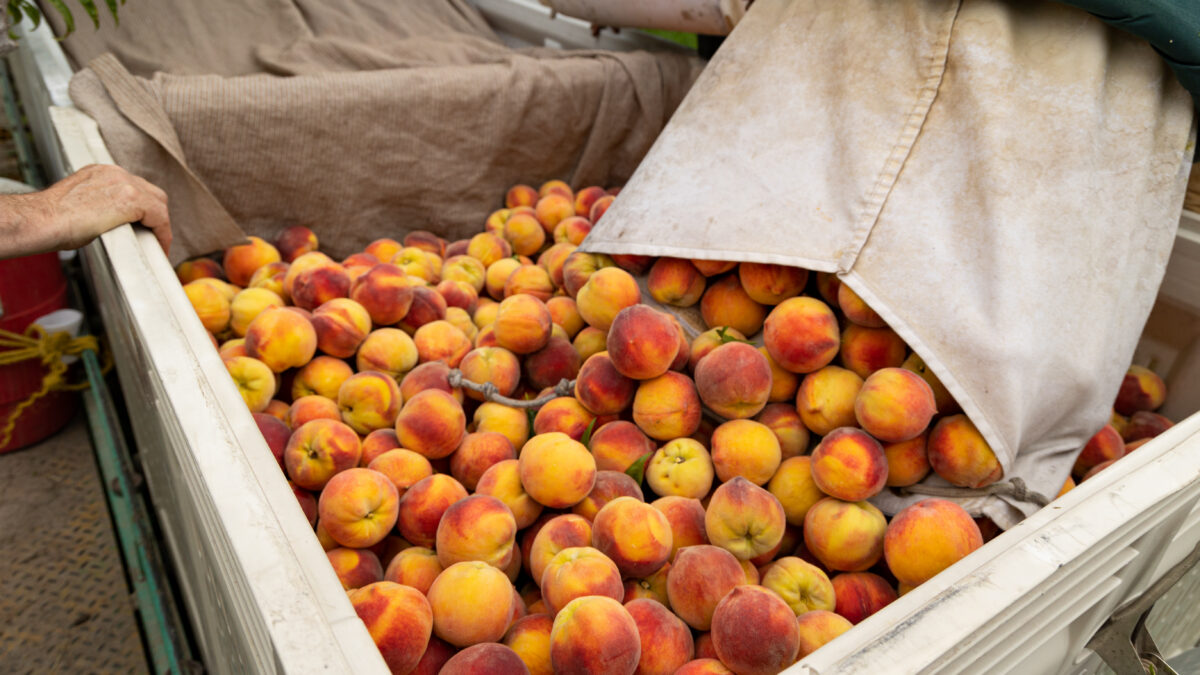Technology, Innovation Drive Success in Organic Fields
Guest Author
Special Contributor to FB.org

photo credit: Colorado Farm Bureau, Used with Permission
Guest Author
Special Contributor to FB.org
By Carolyn Olson
Over the past 103 years, our farm has seen many changes. Most of the transitions are consistent with those made by other farmers; from horses to tractors and from no chemicals to what is considered a typical conventional farm using genetically engineered seed and compatible pesticides.
The farm that my husband, Jonathan, and I own and manage today also made the change from growing many varieties of crops to a three-crop rotation of corn, soybeans and small grains. One constant from the 1940s to present day is raising soybeans and small grains for seed, certified through the Minnesota Crop Improvement Association.
Over the years, our predecessors knew it was important to find ways to add value to their crops. That is also why Jonathan started raising food-grade soybeans in the 1990s. In 1996, buyers started asking if those soybeans were organic. Being curious about the business advantages that might hold, we started asking questions and ultimately decided it was worth giving it a shot. So we began to transition our land field-by-field, until all 1,100 acres were certified organic.
Today, we are regularly asked about how we grow our organic crops, and if we still farm how Grandpa did.
The true scope of today’s modern organic farm, including ours, is as dynamic and technology driven as our conventional counterparts. Keeping an eye toward innovation is vital to farm success across the board.
Here are just a few of the ways we put that into practice on our organic farm. Each spring, we complete an Organic Systems Plan that outlines our plan in each field for the year. We supply seed tags, manure test results, soil test results, and our plans for dealing with weeds and pests.
We rely on soil tests to document that we are improving the health of our soil. That is an important part of organic agriculture. We used to conduct random basic fertility tests. We shifted to grid sampling, which yields more accurate data on fertility and soil health.
Innovation, including systems and equipment, continues to drive us forward. Currently we are in the process of having our soils typed using a Veris mapping system. The data gathered through grid sampling and Veris mapping is applied against yield data from previous seasons to help our agronomist create maps for planting. We use a John Deere 7300 18-row planter set to 22-inch rows. The planter is equipped with precision planting and variable rate technology systems. Our corn and soybean crops are planted to optimize yields based on field conditions and data.
In addition, our tractor is equipped with an auto-guidance system and monitor. Being able to plant, harrow, rotary hoe, cultivate, and flame-treat weeds using the same wheel tracks reduces the amount of compaction in the field, and makes us more efficient. In the spring, the planter tractor relies on an iPad that works in conjunction with field and precision planting monitors. In the fall, the combine has the same three monitors, plus the combine’s command center. The data collected is used to help us make decisions on how to improve and identify what gives us the best shot at maximizing our potential.
Farming today requires a measure of pragmatism when it comes to business strategy, and we are no different. While we focus on organic production on the crop side, since 1992, Jonathan and I have been custom raising pigs conventionally in curtain-sided barns. Doing so allows us to capture the manure for use as fertilizer for our organic crops. Raising hogs in Minnesota, where it gets pretty cold most winters and can reach 100 degrees in the summer, made the decision to continue raising pigs in our barns easy.
Using manure from our pig barns is a key part of our soil fertility plan, and supplies the nutrients for our wheat, and corn. In areas where soil tests show we are low in phosphorus, we use pelleted poultry litter. The pellets are used ahead of our soybean rotation, but, again, technology drives our decisions. Our agronomist creates a map where the pellets need to be applied, and that information is uploaded into the monitor in the cab of our tractor. In this case, variable rate technology is not cost effective, so the driver of the tractor flips a switch to spread the pellets where need is indicated.
We are organic crop farmers. We don’t farm like grandpa did, but we share his spirit of innovation. He would be proud that we have carried on the tradition of raising seed. And just like his transition from horse to tractor, we consistently look for new ways to maximize our resources and add value to our crops. Adapting through the adoption of technology works for organic farmers just as it does for conventional farmers. Simply put, it’s just the smart thing to do.
Carolyn Olson
Farm Bureau member
Top Issues
VIEW ALL